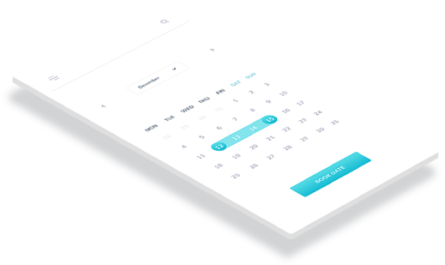Starting a new business venture with a great idea is an exciting prospect for many people. However, before you dive right in and launch your startup, it is highly recommended that you first develop a solid business plan. Taking the time upfront to create a thoughtful plan will provide a roadmap that guides your steps once you do get underway.
One of the key elements to cover in your startup plan is a description of your core business concept. Explain in clear language the problem you seek to solve or the need you aim to meet with your product or service. For instance, you may have an app concept that will make grocery shopping far easier for today’s busy parents.
Plan’s Purpose
Every successful business needs a thoughtful plan behind it. Be sure to research your market thoroughly and think through operations in detail. With a solid roadmap in place, you’re ready to take those first steps on the path to startup success.
Having a solid plan shows you did your homework before starting up. Even jobless people can launch a startup with careful planning. They can seek loans like loans on benefits from direct lenders as funding until revenue builds.
Some key parts of a strong startup plan include:
- Business Summary – A high-level overview explaining what you do. Cover your mission, product/service, target customers, and competitive edge.
- Market Analysis – Research your industry trends, size, growth rate and competitors. Know your niche and who you serve.
- Operations Plan – Map out how you will produce, deliver and support your offerings. What vendors or partners are needed?
- Management Team – Introduce your key players and their experience. Prove you have the talent in place to succeed.
- Financial Projections – Estimate sales, expenses and profit/loss for the first few years. Include funding needs and how you’ll gain investors.
Learn About Your Market
Before starting a business, learn about your market. What is the need? Who are the buyers? Who else sells to them? Research helps you make smart choices.
Look at industry data. How big is the market? Does it grow? Study buyers next. How many are there? What do they want? Watch competitors, too. What do they offer? How do they attract buyers?
Search online for market facts. Trade groups and government sites share helpful data. Stay up to date after you start too.
Figure Out Your Business Model
Every business has a model. The model shows how it makes and delivers offerings. And how it gets paid. Planning your model is key.
What makes your product or provides your service? Will you make it in-house or use vendors?
Next, how will you sell and deliver it? Stores, websites, apps? What works for your market?
Finally, how will you be paid? One-time fees, subscriptions, advertising? How much revenue can you expect? How low can you keep costs? Price is based on what buyers will pay.
A good model lets you start small. Then, add features and offerings as you grow. Review and adjust to keep up with changes. But stick to models that work unless you must change.
Plan Your Finances
Finance forecasts are a must in any plan. Be realistic with numbers. If not, you risk money issues later.
Start low for new businesses and look at market data. Review competitor prices. Consider costs too by making, marketing and operating your business. Don’t forget the small costs that add up.
Use projections to make a profit and loss forecast. Factor in taxes, loan payments and owner pay, too. Revise as needed until you expect profitability.
Also, project cash flow needs. This helps you time investments of your own money. And when you may need loans. Review and adjust plans yearly. Compared to actual results. Tweak projections as you go.
Your plan does not need to be long. The key is covering what matters most:
- Market, model, money.
- Use simple words and short sections.
- Avoid making it too complex.
Leverage Templates as a Starting Point
Developing an effective business plan takes time and effort. Using an existing template can provide helpful guidance on recommended sections to include. Templates offer a framework you can then tailor to fit your specific startup needs.
Look for a straightforward template that covers the core elements: company overview, market research, operations plan, management team, and financial projections. Avoid templates that are too complex.
Start with a template outline, but customise it to tell your unique story. Change the tone and wording to match your brand voice. Expand sections like market research where you want to showcase your expertise. The finished plan should reflect the personality and competencies of you and your founding team.
Funding
Starting a business when unemployed can seem daunting. Doing thorough market research is crucial, but you may lack the time and funds to do it all yourself. Tapping an agency to conduct competitive analysis, customer surveys, focus groups or other research can be wise despite the costs. The market insights they provide help minimise the risk of failure down the road.
However, hiring research help likely falls outside the budget for most starting out without a steady income. In this case, consider pursuing an unsecured loan to cover the expense, even if unemployed. Options like loan on benefits direct lenders allow you to obtain financing that can be used for key startup needs.
Get Feedback to Improve Your Plan
Your first draft is just the beginning. Taking time to get feedback helps reveal areas needing more detail. It also gives you confidence that others understand your messaging.
Have mentors, future customers, and industry folks review your plan. Meet afterwards to discuss their questions and suggestions. Did any sections lack the info needed to follow your business model? Were the financial projections believable? Use their input to refine things.
Schedule regular plan reviews even after launching. Revisit sales and cost assumptions. Update projections when needed. Watch for blind spots that emerge with experience. Continuously improving your plan strengthens your strategy.
Conclusion
Avoid the temptation to make your plan super long. Today’s investors have little patience for dense, wordy business plans.
You will also want to devote a section of the plan to showing you truly understand your target customer base and their needs.
Back up your descriptions with data and research to demonstrate you have done your homework when it comes to who will be in your target audience. Crafting an adaptable roadmap in this way sets your startup on the path to success.




